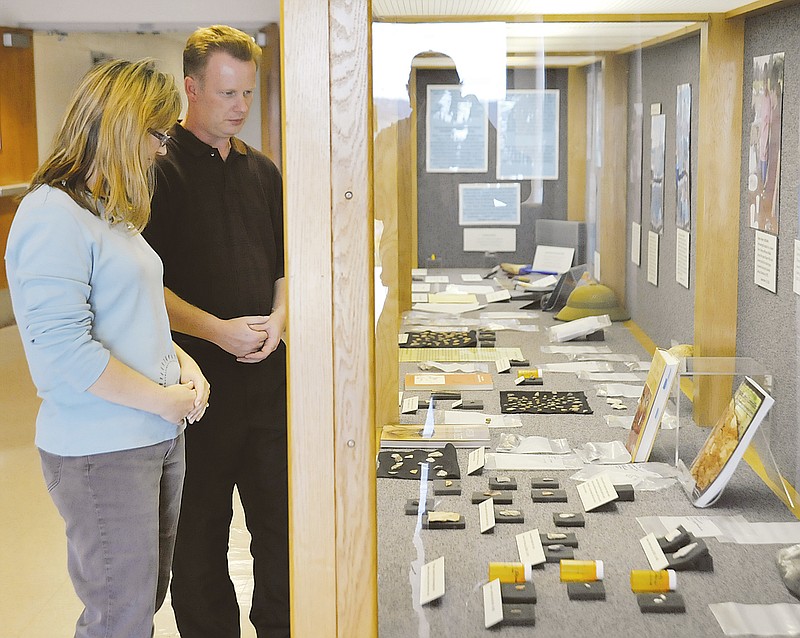When everyday survival depends on the products one makes by hand, there's definitely an urgent need.
That was Master Sgt. Charles Beebe's observation this week when he wondered at the tiny and intricate artifacts discovered on the Ike Skelton Training Site and on display this month at the Missouri National Guard's headquarters.
Beebe has done his share of searching for arrowheads and other artifacts from the past hidden underneath the soil, so he was drawn to the display of discoveries found this fall by the Environment Office with help of local schoolchildren.
"Some of this would just be a rock to me," Beebe said. "It makes me wonder how many times I looked at (what I thought were) rocks, and they could've been an item of interest.
"I may look at rocks differently now."
In recognition of Native American History Month, the Missouri National Guard's history and environmental studies programs teamed up to fill the cases outside the Fallen Heroes Auditorium.
Beebe was on site for a retirement training this week, which gave him the chance to look at the artifact display. He was impressed that some early tribal civilizations used heat treatments for their implements.
"I didn't think Indians thought at that process level," Beebe said. "It had to have been a lot of trial and error."
That kind of awareness is what curator Charles Machon and archaeologist Regina Meyer were hoping for from the dig and display.
"We want to tell the story of archaeology and of the native people," Machon said.
Continuing the education component, the display includes not only the artifacts dating back to 2,000 B.C., but the modern-day process taken to unearth them and the reasons the Guard has undertaken the project.


